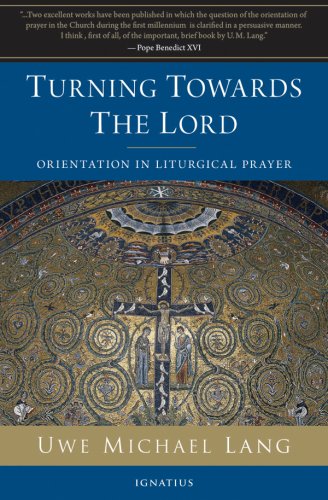Turning Towards the Lord
/Just added Fr Uwe Michael Lang's Turning Towards the Lord: Orientation in Liturgical Prayer to the Locus Iste Bookstore. This is a very highly recommended book dealing with the true reasons behind what is a widely misunderstood and often contentious issue in church architecture and in the liturgy in general. A great deal of popular (mis)conception surrounds the issue of orientation in Christian churches, both in regard to the practice of orienting a building to the east and the question of which way the priest faces. And since much of the misconception is tied up with strongly-held emotional positions on various reforms and traditions, it is difficult to get a clear picture of the place of orientation in liturgical prayer.
All of which makes Fr Lang's text a highly valuable work. He does not shy away from historical discrepancies in practice or claim certainty where actual historical uses are unclear. Instead he reveals the principles underlying the continuity amongst diverse liturgical practices. These are principles which translate well as architectural criteria:
1. The liturgy is offered to and oriented towards God through Christ; 2. Therefore, in the liturgical prayer we face a common direction
The question of "east" is actually secondary to these primary criteria and appears as the symbolic reference for one or the other of these directions for a variety of reasons and in a variety of material manifestations. The lesson is that what is important is not the east itself, but the posture and attitude of orientation. And that which faces east is more consistantly the presiders' action in prayer than any particular building element.
There is an implication that certain postures and directions currently in use (versus populum, by and large) do not fully reveal these principles. As in so many elements of liturgical expression, the vast majority of examples tend to prefer one or the other of two realities with potentially conflicting images.
The principle of a common direction to God through Christ does not preclude the image of a central altar nor does it demand the Tridentine version of ad orientem. It does require the careful consideration of the three-dimensional postural relationships between the various roles within the church assembly so that plan arrangements and visual experiences coincide to focus not on any of the attendant elements of the liturgy but rather the object of its prayer.

